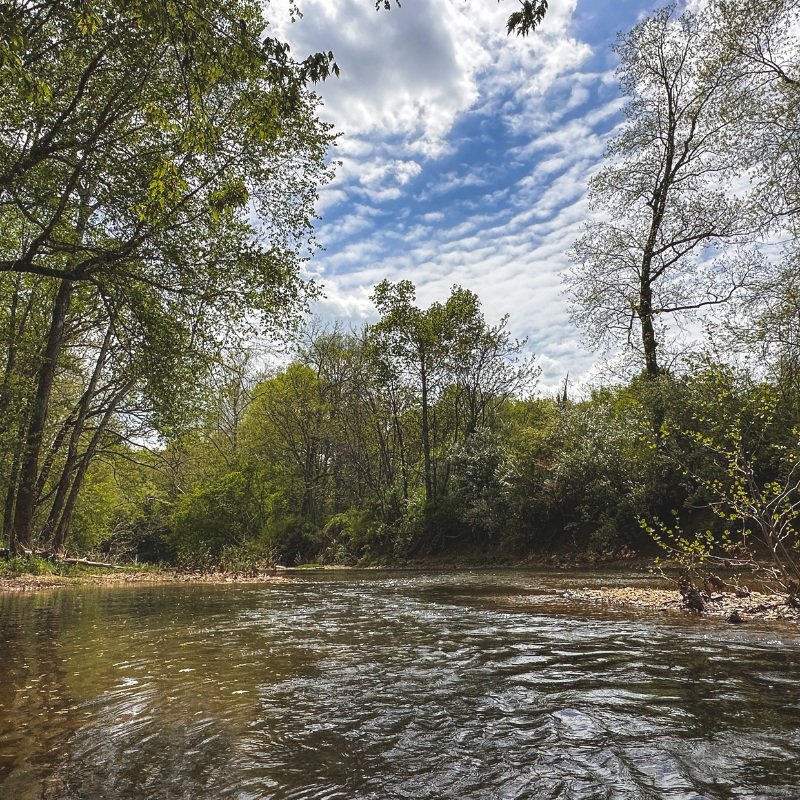Photo Essay: The Unique Riches of Winter Woodlands
/Spot plants and animals usually hidden by leaves in the summer
Cold air, clouds, and snow can often discourage us from getting outside in the winter. Weeks and months can pass before we visit a local trail or park. Yet, winter is a wonderful time to get out and experience the outdoors!
The cold weather causes changes to the landscape, animal behavior, and plant life that are not experienced during any other season.
For example, in Hampshire County, West Virginia, Potomac Conservancy holds a conservation easement on a 275 acre wooded property (which means we permanently protect this river-friendly habitat forever) that is full of reward for the cold-weather explorer.
Check out the diverse critters and plant life that we spotted on a recent winter walk through this protected forest.
P.S. Read to the end to test your tracking skills!
A permanently protected paradise
Forests that are protected with conservation easements connect wildlife habitat on private lands to those on public lands (and everywhere in between). They give wildlife and plants the chance to live, breed, travel, and migrate. When protecting a property from development, we are not only protecting the physical landscape, but we are also protecting all of the organisms that rely on the land for survival.
No leaves, no problem
Deciduous forests are commonly found in the eastern half of North America. The word “deciduous” describes trees or shrubs that shed their leaves, annually, for the winter months. These forests are full of rich biodiversity, providing habitat for a large variety of plants and animals. Even in the winter time, you will see squirrels and hawks perched up in the trees or saplings (young trees) poking out through the snow.
Trees may not have their leaves in the winter, but that doesn’t mean you can’t identify them. Bark, twigs, and overall shape may provide clues to the type of tree you are looking at. Also, look on the ground! You will probably find fallen leaves from the overhead tree. These four straight Poplars are easy to spot out amongst the Oaks and Maples.
Look closer…
It’s easy to overlook low-lying mosses and lichens among other colorful flora of the summertime. However, in the winter, they may be the most eye catching subjects in the forest. Unlike taller, more noticeable plants, mosses do not have a vascular system. Without this series of tubes to transport water and nutrients, mosses cannot grow very large. Because they have no stem or leaves, they must use each other to stay upright. Whenever you see a large area of moss, you are actually looking at carpets of individual plants holding each other up!
When you start to look more closely at lichens, you learn that they are quite fascinating. Lichens are not plants, but “composite organisms” made up of two or three different kinds of organisms. They form a mutualistic relationship, meaning they all work together and benefit from one another. In this amazing relationship, fungus benefits from algae because fungi, having no chlorophyll, can’t photosynthesize their own food. A lichen’s fungal part is “fed” by its photosynthesizing alga counterpart. In return, water and nutrients that the fungus soaks and retains, is passed along to the alga.
Unlike mosses, ferns are a species of vascular plants with stems and leaves. Ferns differ from many other plants because they lack flowers and, therefore, seeds. They reproduce by spores released from the underside of the fronds (leaves).
What’s that sound?
Woodpeckers hammer on trees to find food, build nests, and to communicate with one another. Several factors contribute to their ability to do this with no brain damage or other apparent injury. One is a chisel-like beak that pierces into wood rather than stopping abruptly. Also, their brain is packed tightly in their small skulls, protected by specialized spongy bones, and kept in place during impact.
If you hear a loud knocking while walking in the woods, chances are there’s a Pileated Woodpecker nearby. This woodpecker is the largest in our area and is often confused as a Woody Woodpecker look-a-like (although, Woody was fashioned after an Acorn Woodpecker, not a Pileated). Woodpeckers have an unusually long tongue for reaching into narrow openings to extract insects and spiders from trees and ant hills. Their tongue wraps around the back of the skull and continues over the top, extending forward as necessary. Surprisingly, the large Pileated Woodpecker has a shorter tongue than many of its smaller relatives.
There are so many things to see and learn about when exploring the forest - even in the winter time!
So bundle up and get outside to a public park or even your backyard! And on those days that aren’t so nice, visit explore our Lands program story map to learn how Potomac Conservancy helps protect critical forests, such as this one.
Test your ID skills! Hover over each picture for the answer!
Get local clean water and river news delivered to your inbox.
Sign up to receive our monthly River Update email.
100% Private. We don’t spam or share your information.

















